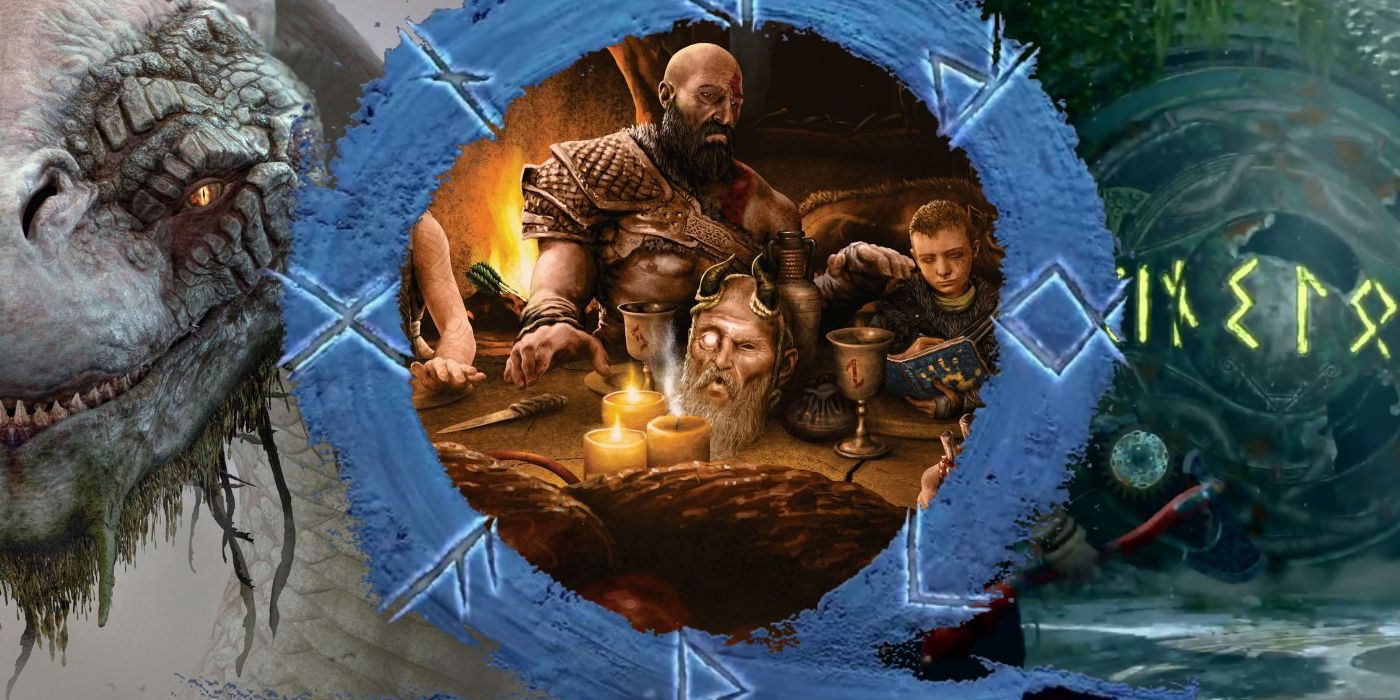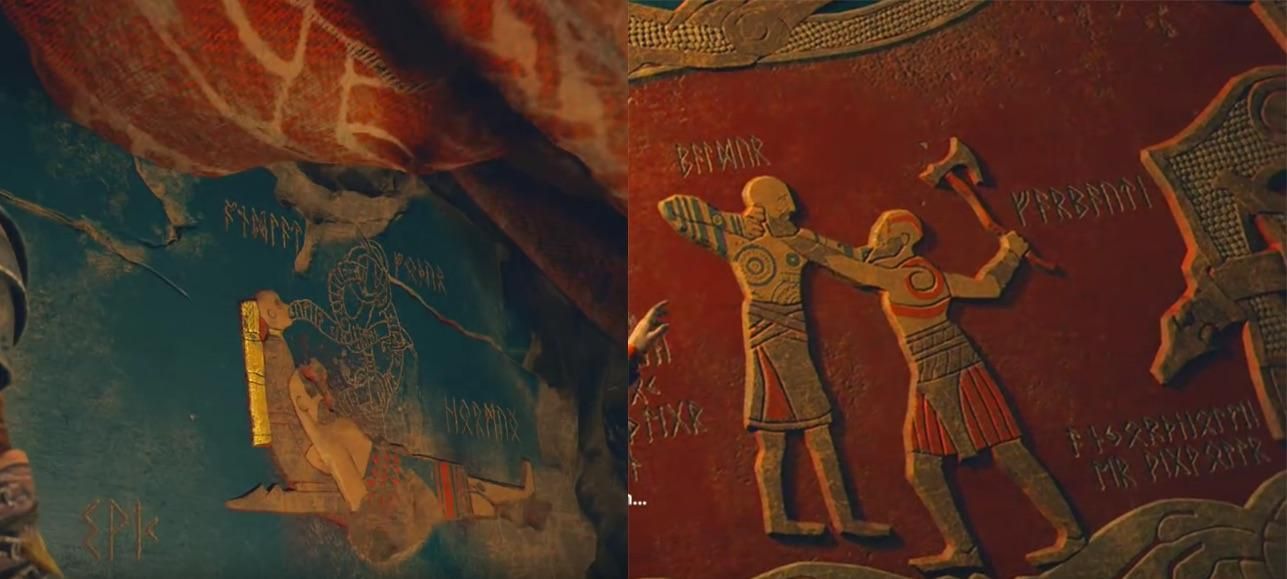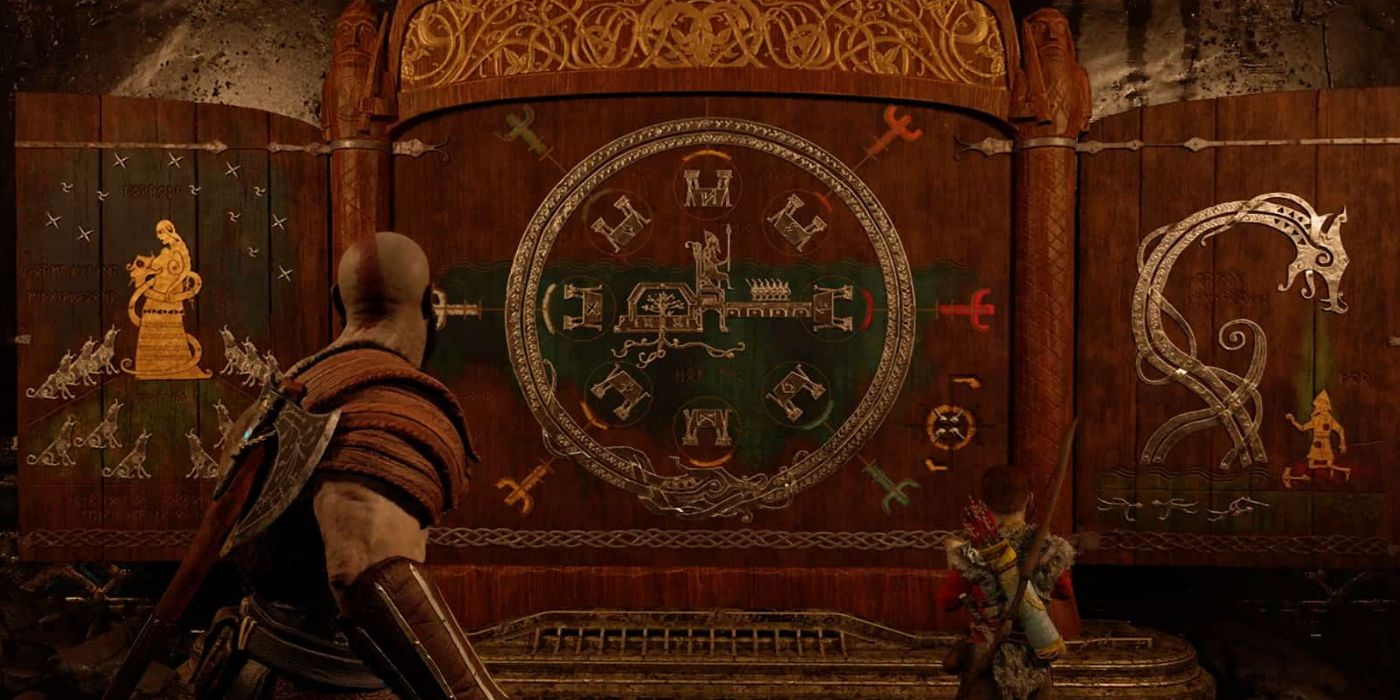
God of War's take on the Nine Realms of Norse mythology is immensely detailed. With the reveal trailer for the next game only teasing that "Ragnarok is coming" many fans have been diving back into the last game to uncover all of its secrets.
Players can find runic writing in the Norse "Futhark" alphabet across the world of 2018's God of War. Even years since the game's release fans are still translating some of the messages hidden in its runic script. Here are all the runes found in the game that, when translated, reveal some big hints about the plot of God of War's Ragnarok sequel.
RELATED: God of War Ragnarok Release Date Reportedly Delayed

Some of the first runes translated by the God of War fan community were those found on the Jotunheim mural towards the end of the game. The mural itself already prophesized Ragnarok, and so was a natural starting place for fans looking to learn more about the sequel.
The Jotunheim mural reveals some of the more subtle ways God of War's canon has been woven into its Norse source material. One panel shows Kratos and Baldur's fight. The runes next to Kratos can be translated as "Farbauti." Farbauti is the name of Loki's father in Norse mythology. The name roughly translates as "dangerous striker," often interpreted to mean lightning. This in turn with Loki's mother's name - Laufey, meaning leaves - sometimes leads to Loki's birth being interpreted as the start of a wild fire.
The runes which drew the most attention, however, were those on the final panel. The runes surrounding Atreus and the figure he is holding spell "andlat," "foður," and "hormui." Modern Icelandic is still close enough to Old Norse to provide translations. In order these words mean "death," "father," and "mourned."
"Father" would imply that the figure Atreus is holding is Kratos, though he is depicted quite differently from his appearance in the panel with Baldur. He doesn't have his tattoos, he appears to be wearing different clothes, his beard is different, and though it could be damage to the mural he may also be missing an arm and leg. Many have taken the entire panel as a hint that Kratos will die in the next game, which the runes seem to support.
To the left of Atreus, however, are runes spelling the word "svik." This means "deceit" or "betrayal." This has led many to assume that Atreus will betray Kratos, leading to his death. There is another possibility, however. "Deceit" and "father" could both refer to two of the Norse gods. "Svik" would refer to Loki, the god of deceit, while father could refer to God of War's Odin, the All-Father yet to appear in-game.
The similarities between Baldur and Kratos in the earlier mural panel makes this seem more likely, with only subtle differences distinguishing the depictions of God of War's burly, bald male characters. Whether he is is cradling Odin or Kratos, runes elsewhere in the game hint that Ragnarok has far more in store for Atreus.
RELATED: The Most Heavily Tattooed Video Game Characters

Jormungandr's shrine can be found in the Vanaheim Tower in the Lake of the Nine. Like all of the Jotnar shrines it is a triptych. The first panel alone confirms some very important details about God of War's world. It shows a woman breastfeeding the World Serpent as a pack of wolves howls around them.
The runes by the woman spell "Angrboða." Angrboda is a Jotunn in Norse mythology known as the mother of monsters. She has several children with Loki, most notably Jormungandr and Fenrir, the wolf prophesized to devour Odin during Ragnarok. The runes below spell out Jormungandr's family tree - "Sonr Loka ok Angrboðu · Broður Fenris Heljar ok Járnvarga." This description translates as "son of Loki and Angrboda. Brother of Fenris, Hel, and the Iron Wolves."
Mimir and Freya already explain that in God of War's universe the World Serpent seen in the Lake of Nine was actually sent back in time from the future. During Ragnarok, Mimir explains, Thor and the World Serpent fight with such ferocity that the tree of life itself splinters, sending the serpent back to a time before his own birth.
As soon as he arrived in the Lake of Nine Thor attempted to kill the creature, but they came to a stalemate which will be broken once and for all during Ragnarok. This is itself depicted on the shrine's final panel, which shows God of War's Thor with two puncture wounds from Jormungandr's fangs. In the myths, Thor walks nine feet before collapsing and dying from the World Serpent's venom. In the middle of the triptych is Jormungandr encircling the Lake of Nine, with runes spelling "umliðit er ørlög" or "fate is arranged." This seems to refer to the World Serpent being in place for his role during Ragnarok.
The entire shrine seems to confirm that at some point during the next game Atreus will father the World Serpent and his other children with the mother of monsters. How literal this will be remains to be seen, but it could also mean that the time phenomena confirmed to take place during Ragnarok will send Atreus back in time much like the World Serpent. This would then give him time to age and fulfill many other parts of Loki's role in Ragnarok so that everything is in place for the "twilight of the gods" the second time around.
These runes don't make God of War's Ragnarok plotline explicit, but they do show that Santa Monica Studio is not shying away from the complications of the myths for the sake of its own story. Instead, it seems fans can expect Ragnarok to be far more than just the end of the world, and for the splintering of the world tree to be an essential event in the next game.
God of War's Ragnarok sequel is currently set for release in 2021.
MORE: The Silence Around Horizon Forbidden West is More Concerning than God of War

